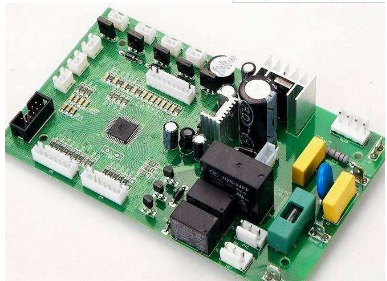The excellent quality of PCB inks is a comprehensive manifestation of the scientific, advanced and environmentally friendly formulations. So from what aspects should the quality of PCB ink be evaluated? Generally speaking, you can start from the following 12 aspects.
1, viscosity
is the abbreviation for dynamic viscosity. It is generally expressed by viscosity, that is, the shear stress of fluid flow divided by the velocity gradient in the direction of the flow layer. The international unit is Pa/s (Pa.S) or milliPas/s (mPa.S). In PCB production, it refers to the fluidity of ink produced by external forces.
Viscosity unit conversion relationship:
1Pa.S=10P=1000mPa.S=1000CP=10dpa.s
2, plasticity
means that after the ink is deformed by external force, it still retains its properties before deformation. The plasticity of the ink is conducive to improving the printing accuracy;

3, thixotropic
The ink is gelatinous when standing, but the viscosity changes when touched. It is also called tremor and sag resistance;
4. Liquidity
(leveling) the extent to which the ink spreads to the surrounding under the action of external force. Fluidity is the reciprocal of viscosity, and fluidity is related to the plasticity and thixotropy of the ink. The plasticity and thixotropy are large, the fluidity is large; the fluidity is large, the imprint is easy to expand. With low fluidity, it is prone to network formation, resulting in ink formation, which is also known as reticulation;
5, viscoelasticity
refers to the ability of the ink that is sheared and broken after the ink is scraped by the squeegee to rebound quickly. It is required that the ink deformation speed is fast and the ink rebounds quickly to be beneficial to printing;
6. Dryness
The drying of the ink on the screen is required to be as slow as possible, and it is hoped that after the ink is transferred to the substrate, it is required to be as fast as possible;
7, fineness
The size of pigment and solid material particles, PCB ink is generally less than 10μm, and the size of the fineness should be less than one-third of the mesh opening;
8, wire drawing
When the ink is picked up with an ink shovel, the degree to which the filamentous ink does not break when stretched is called stringiness. The ink filament is long, and there are many filaments on the ink surface and the printing surface, making the substrate and the printing plate dirty, or even unable to print;
9. The transparency and hiding power of the ink
For PCB inks, various requirements are put forward for the transparency and hiding power of the inks according to different uses and requirements. Generally speaking, circuit inks, conductive inks and character inks all require high hiding power. The solder resist is more flexible.
10. Chemical resistance of ink
PCB inks have strict standards for acid, alkali, salt and solvent according to the different purposes of use;
11. Physical resistance of ink
PCB ink must meet external scratch resistance, heat shock resistance, mechanical peel resistance, and meet various strict electrical performance requirements;
12, the use of ink safety and environmental protection
PCB ink requires low toxicity, odorless, safety and environmental protection.
The basic properties of twelve PCB inks are summarized above. Among them, in the actual PCB production process of screen printing, the viscosity problem is closely related to the operator. The viscosity is very important to the smoothness of the silk screen. Therefore, in the PCB ink technical documents and QC reports, the viscosity is clearly marked, indicating under what conditions and what type of viscosity testing instrument to use. In the actual printing process, if the ink viscosity is too high, it will be difficult to print out, and the edges of the graphics will be severely jagged. In order to improve the printing effect, a thinner will be added to make the viscosity meet the requirements. But it is not difficult to find that in many cases, in order to obtain the ideal resolution (resolution), no matter what viscosity you use, it is still impossible to achieve. why? After in-depth research, it was discovered that ink viscosity is an important factor, but not the only one. There is another quite important factor-thixotropy. It is also affecting printing accuracy.